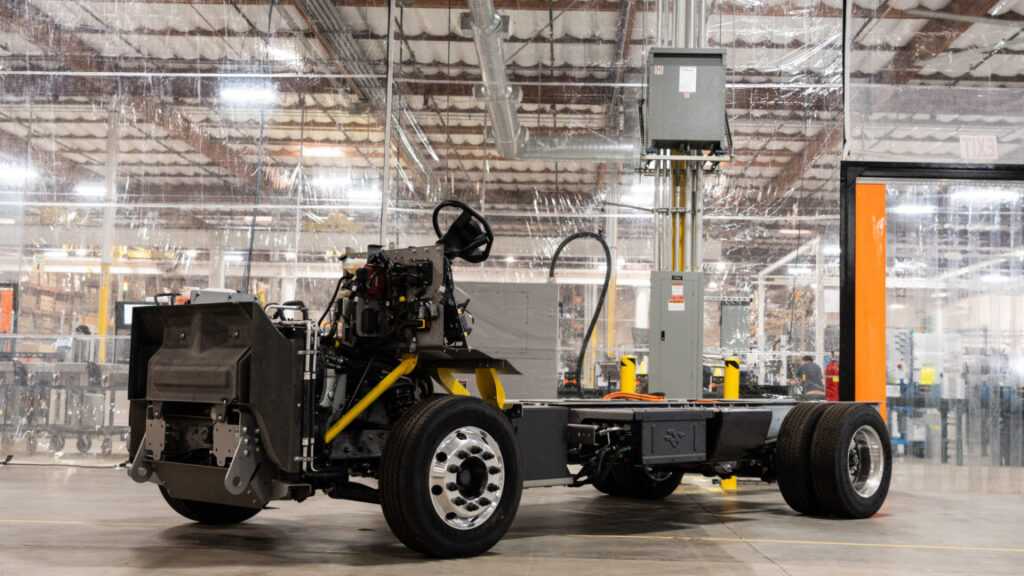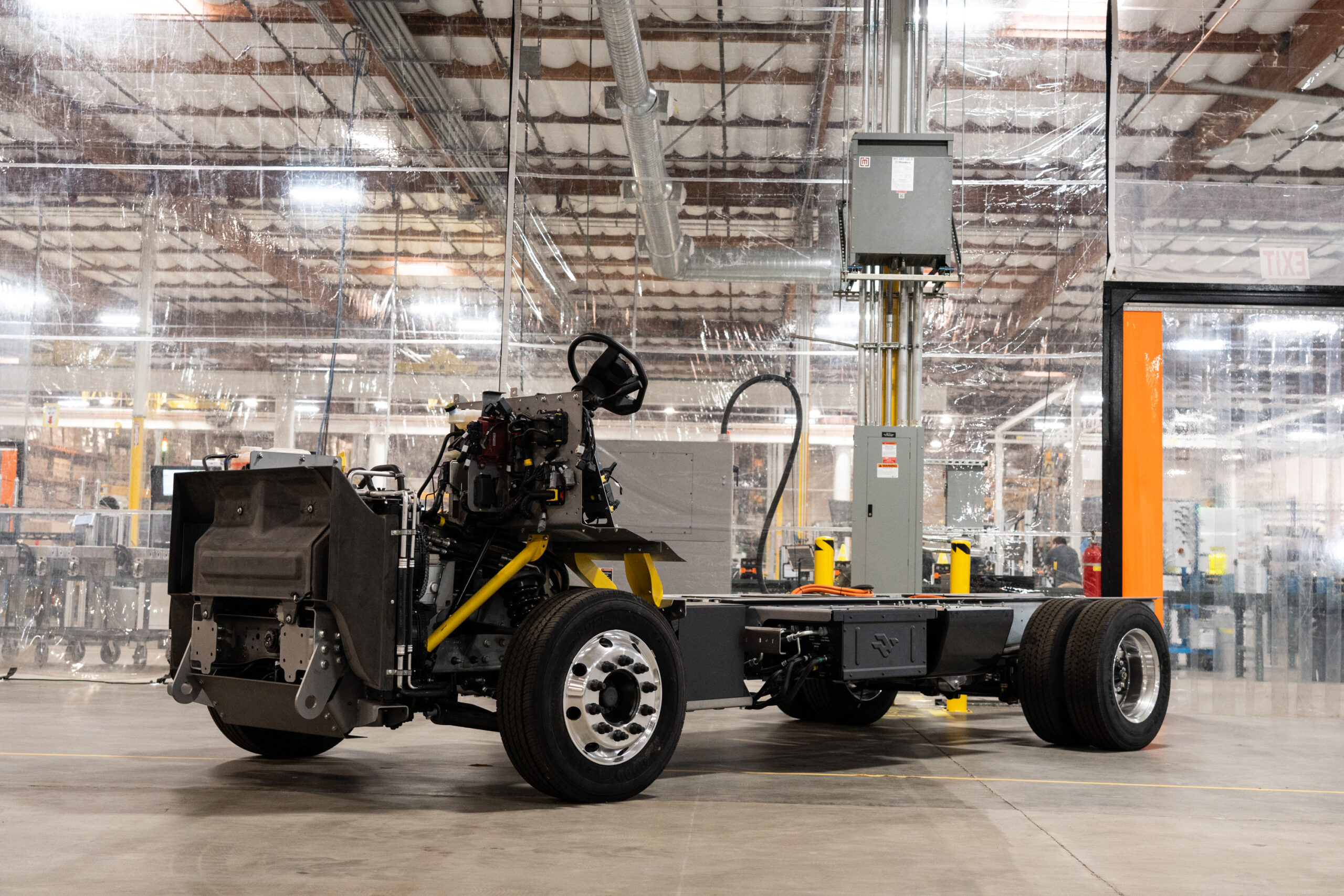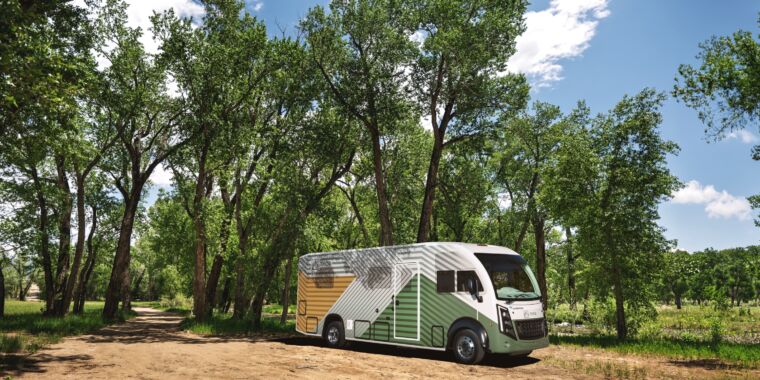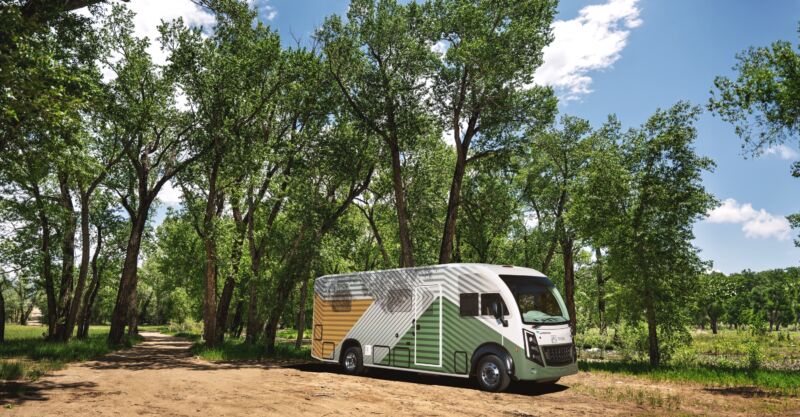This EV could reboot medium-duty trucking by not reinventing the wheel
GARDEN GROVE, Calif.—There’s no shortage of companies looking to reinvent the delivery experience using everything from sidewalk drones to electric vans. Some are succeeding, but many more have failed by trying to radically rethink the simple, age-old task of getting stuff from one place to another.
Harbinger likewise wants to shake up part of that industry but in a decidedly understated way. If you found yourself stuck in traffic behind one of the company’s all-electric vehicles, there’s a good chance you wouldn’t even notice. The only difference? The lack of diesel smoke and clatter.
From the outside, Harbinger’s pre-production machine looks identical to the standard flat-sided, vinyl-wrapped delivery vehicles that seemingly haven’t changed in decades. That’s because they really haven’t. Those familiar UPS and FedEx machines are built on common chassis like Ford’s F-59 or Freightliner’s MT45, with ladder chassis and leaf spring designs dating back to the earliest days of trucking.
Rather than discarding decades of learning and optimization, Harbinger is keeping its focus narrow, changing only what’s required to move the industry away from expensive and ugly combustion to cleaner and cheaper electric drive.
Harbinger is exclusively focused on medium-duty options right now, trucks that are significantly larger than the Rivians or Mercedes eSprinters of the world. “That’s basically everything 5 through 15 tons or thereabouts,” co-founder and Harbinger CTO Phillip Weicker said, “the dominant product for what’s called a strip chassis, essentially what in the passenger market is called a skateboard.”
Yes, Harbinger just builds the chassis. Everything on top comes from somewhere else.
“Most medium-duty vehicles are built by one company building the chassis [and] another company installing the body,” Weicker said. “So this made the perfect sense for our first product because we’re going to be focused almost entirely on the differentiated aspects. We don’t have to deal with the high capital investments for body in white, paint shop, [and] a lot of the things that have cost EV startups lots of money just to get to a table-stakes position with their incoming competitors.”
If you’re a company that wants a medium-duty vehicle like this, your dealer sources the chassis for you and then coordinates sending it to a company called an upfitter. The upfitter then builds the entire body on top of the chassis to your exact specifications.
Designs from upfitters have been defined and refined over decades of experience by the companies that operate them. Those giant white or brown delivery vans might look very similar from the outside, but there’s a lot of nuance to their design.
“The door handles work slightly differently. The locking logic works differently. The vehicles are about 2 inches narrower for one of those companies than the other,” Harbinger co-founder and CEO John Harris said. “These are all designed to get the driver in and out of the door one second faster at every stop, to get in and out of the depot and load the vehicle two or three minutes faster.”
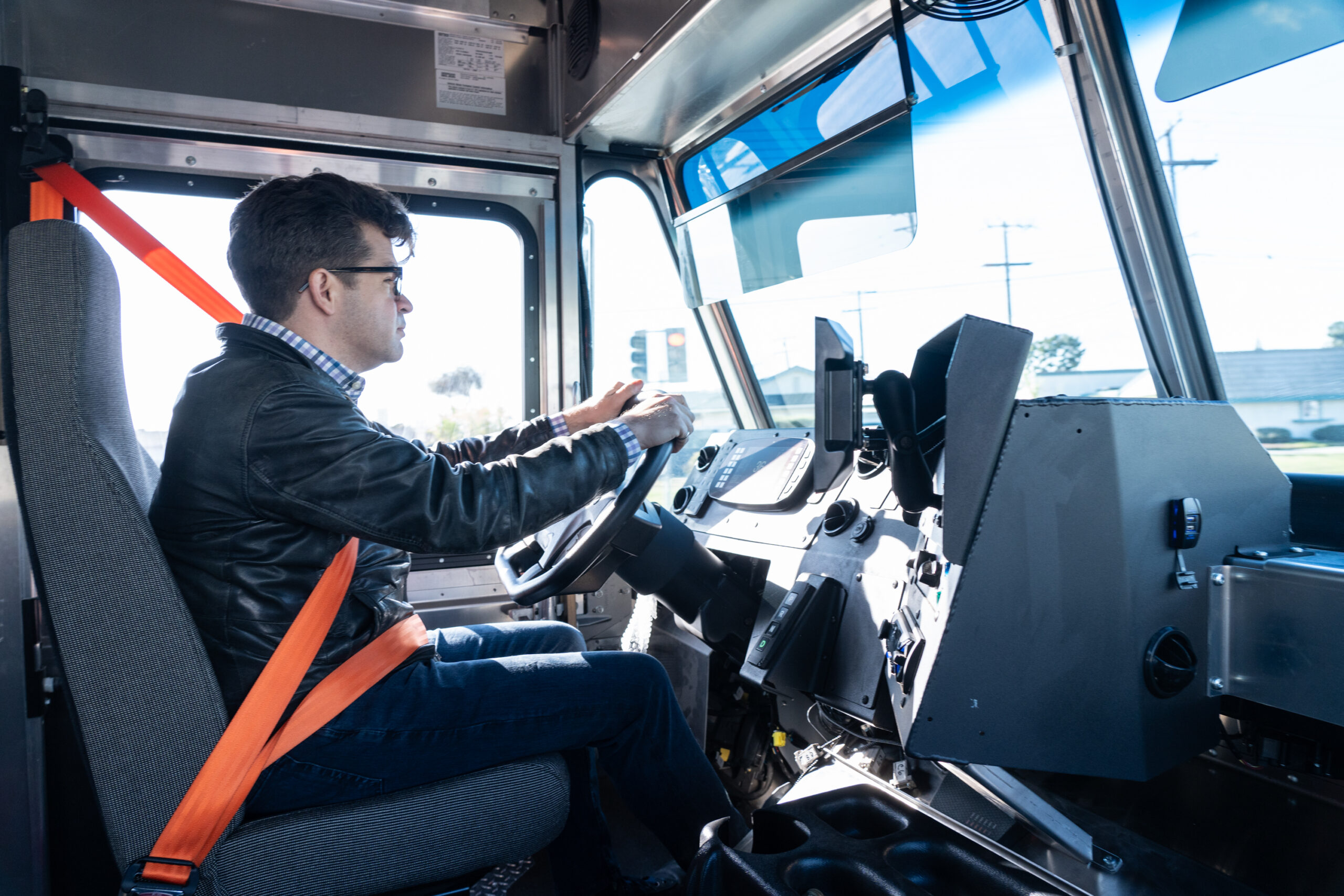
Harbinger CTO Phillip Weicker demoing the delivery van. Credit: Tim Stevens
Harbinger’s solution fits the same template but operates in a very different way. It’s still a big, long ladder-frame, and it uses a leaf-spring rear suspension. But rather than slapping a big engine up front, Harbinger relies on a 330-kW (443 hp) electric motor that’s wound in-house and mounted between the rear wheels. It uses a De Dion arrangement, which isolates the heavy motor from the rear suspension.
The idea was to keep the whole thing simple and familiar so that any company that wanted to get off diesel could start ordering vehicles with a Harbinger chassis without radically changing its fleet management or driver training.
I got a chance to see just how familiar the two things are during my visit to Harbinger’s 5,000-square-foot headquarters in Garden Grove, California. I wish I could say driving the Harbinger was an evocative, world-changing experience, but the company’s ethos of not reinventing the wheel very much continues through to the experience of sitting behind the wheel that steers the thing.
I started by taking a lap of the Harbinger parking lot in a Ford F-59-based machine, a former delivery truck that had already lived a hard life before it was put out to pasture, becoming something of a test mule for Harbinger. I’d never driven anything exactly like this before, but I have spent many hours droning down the highway in various abused U-Haul trucks, and the experience is much the same.
The same, but louder. Yes, the 6.7-liter diesel certainly makes a lot of noise, but the creaking and crashing of the boxy body built on top of that aged ladder-frame chassis is deafening. The automatic transmission has a leisurely approach to its job, delivering the next gear only when absolutely needed. The throttle delivers the kind of precision response that had me slamming my foot to the floor just to get around the parking lot. Doing so made a lot more noise but not much more acceleration.
That part, at least, is radically different in the Harbinger. While the throttle pedal has the same long throw, you needn’t dip nearly so far into it. A light pedal brush had the empty Harbinger delivery truck leaping forward. It’s hardly a Lucid Air Sapphire, but it still surged forward with the sort of instant acceleration that makes EVs so addictive.
Braking, too, is far more sharp. I lurched against the racy orange seatbelt the first time I stepped on the left pedal, and the combination of regenerative braking and fresh disc brakes made for a far more effective slowing solution.
There’s no transmission to worry about here, either. Instead of slinging a giant column shifter downward, in the Harbinger, you just hit the D button and pull away.
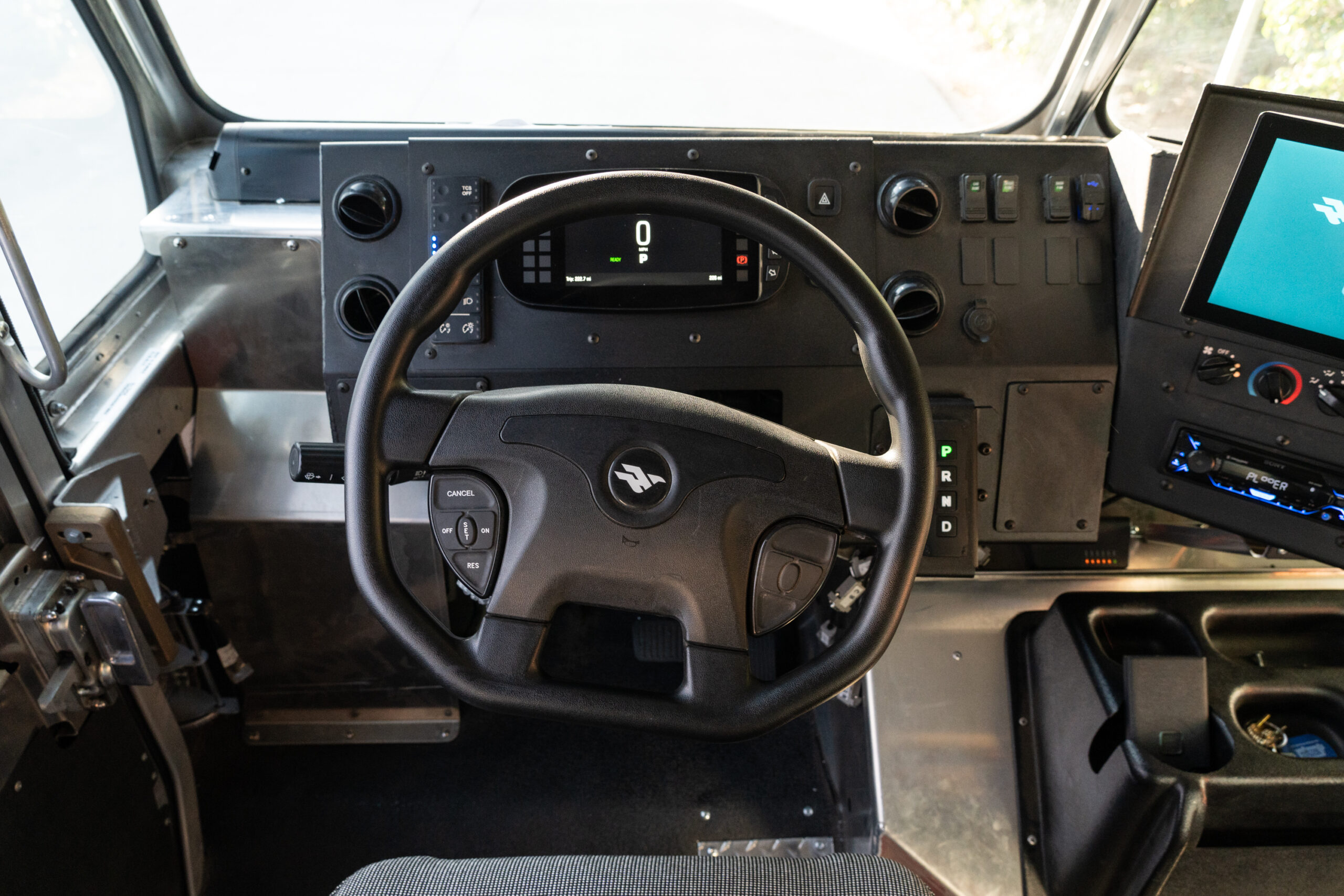
It’s not the most stylish cabin we’ve sat in. Credit: Tim Stevens
In motion, though, the experience is much the same. You’re seated up high, deafened by the clatter and bangs from the empty, boxy body, which, again, is exactly like that built on a traditional truck. The feedback is so harsh that it’s actually difficult to separate the overall ride quality of the truck. Still, even unladen, and thus at its harshest, it’s a far smoother drive than the Ford.
It’s easier to turn, too. The Harbinger offers 50 degrees of steering angle at the front. I pulled off my first U-turn on a narrow, suburban LA street quickly enough to not get honked at by even a single impatient Angelino.
It ultimately wasn’t the plush, hushed experience offered by your average electric sedan, but that’s not the point. By keeping everything familiar, Harbinger CEO John Harris told me Harbinger can offer a product with price parity to those aged, diesel-powered machines. Harris declined to provide formal pricing, but its affordability is at least partially dependent on federal incentives.
Currently, alternatively fueled medium-duty vehicles like Harbinger’s are eligible for the Commercial Clean Vehicle Credit 45W, which provides incentives of up to $40,000, depending on vehicle size and propulsion type.
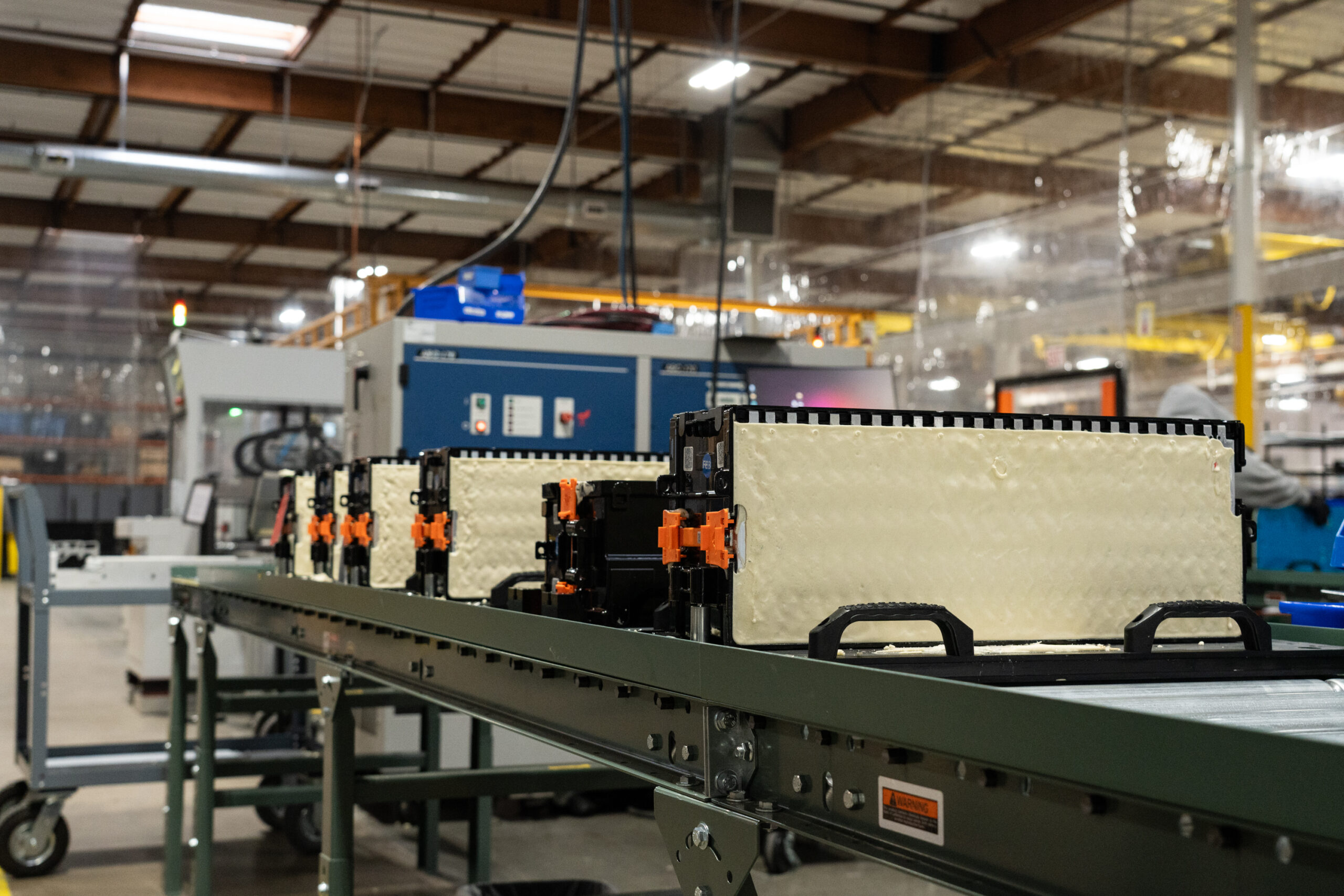
Battery modules. Credit: Tim Stevens
“Where we’re pricing the vehicles, we need that 45 W if we want to undercut diesel, and that’s what we’re doing,” Harris said. “With 45 W, we can undercut the typical diesel vehicle by a few thousand dollars.”
But even if that credit goes away under the current administration, Harbinger has some price flexibility to remain competitive, he added.
That’s doubly true if you factor in operating costs. Harris says the average cost to operate a medium-duty vehicle like this is $0.50 per mile for fuel, or $0.85 if you factor in all costs relating to the vehicle itself. Harbinger is aiming to halve that, targeting $0.40 per mile. But, Harris says, Harbinger doesn’t need to lean on that total cost of ownership (TCO) logic.
“On a TCO basis, it’s easy: We blow diesel trucks away. But the whole point is to have the right acquisition cost from day one, and then the simpler operating costs deliver savings every day,” he said.
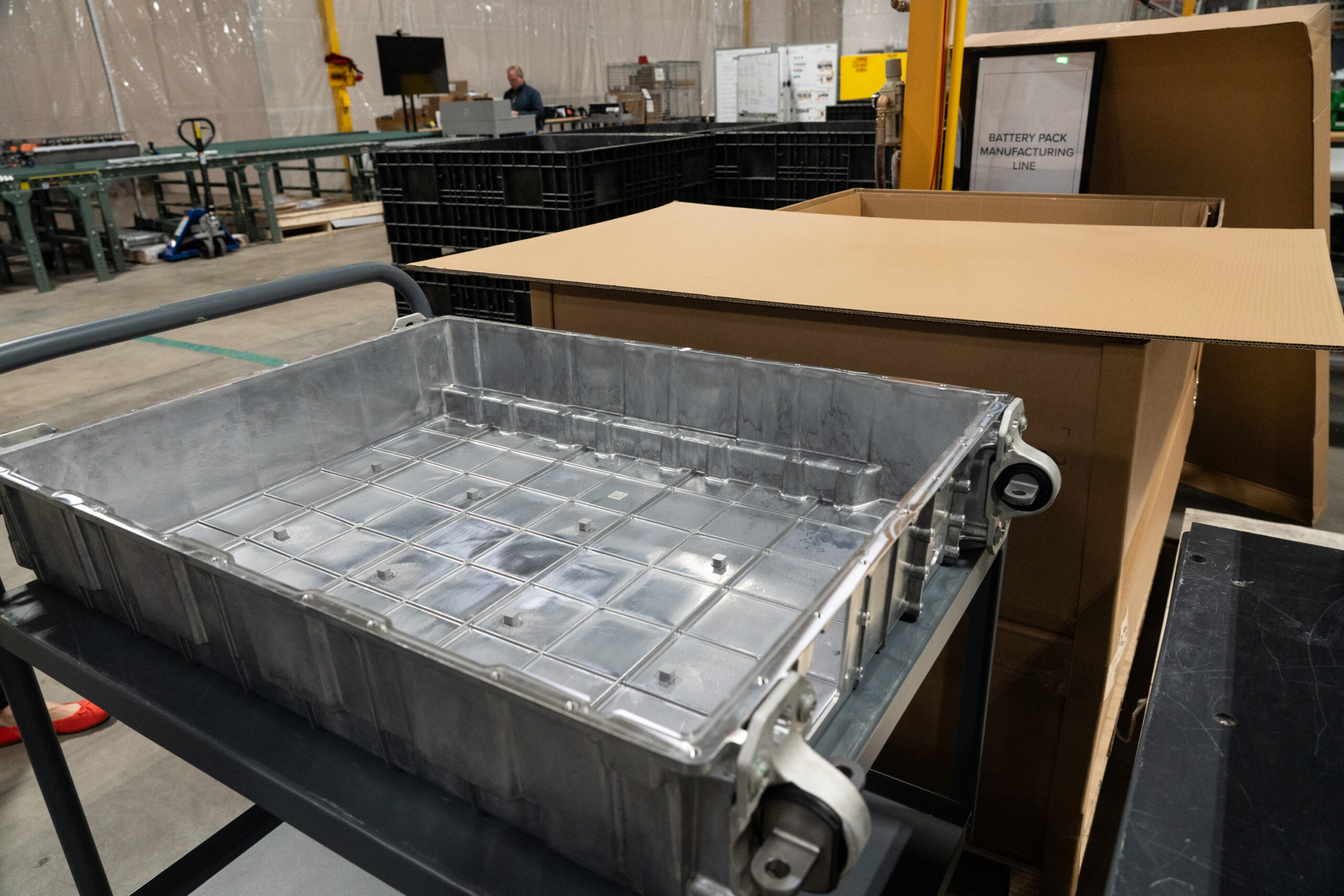
The cast battery pack enclosure. Credit: Tim Stevens
Still, that’s potentially a huge savings when you consider the hundreds of thousands of miles a machine will cover over its lifespan, which is expected to be measured in decades, not years. Many of the medium-duty delivery vehicles you see on the road today date from the last century. Harbinger’s chassis has been designed to last just as long, including its custom-made, gigacast battery packs, which were designed for durability.
“If you took the battery pack out of a Tesla Model 3, and you put it in a commercial truck, and you tried to operate it in that environment, even if the cells lasted, I think the rest of the battery system would kind of shake itself to pieces,” Weicker said.
Harbinger customers can specify their desired pack size, and there’s even a hybrid model with an onboard generator for extended running. Harris, Harbinger’s CEO, declined to say when the company’s chassis will be in full production other than “very soon.” The company has 4,000 preorders on the books, and it has already delivered pre-production models to customers like Thor.
It’s a modest start for the company, which today counts 330 employees, but in an age of EV startups promising the moon and delivering little more than hype, the Harbinger’s focus on the basics is refreshing—and encouraging.
This EV could reboot medium-duty trucking by not reinventing the wheel Read More »
